- From $299 USDUnit price /Unavailable
Description
The Polar Bear Zinnia (Zinnia elegans) is a tender annual with a long 3-month blooming period. Produces huge 4"-5" double blossoms with long, oval crisp white petals around a golden center. Grows 2'-3' tall on sturdy stems with lance-shaped foliage.Stunning as a long-lasting cut flower in a bouquet or vase.
- Life cycle: Annual
- Bloom season: Spring, summer, fall
- Attracts: Bees, butterflies, and other pollinators
- Flower meaning: Acclaim, affection, elegance, farewell, friendship, healing, peace, purity, remembrance, strength
SEED PLANTING TIPS
- Botanical name: Zinnia elegans
- Hardiness zones: 2-11
- Planting season: Spring, summer
- Days to maturity: 60-70 days
- Cold stratify: No
- Depth to plant seeds: 1/4" deep
- Spacing between plants: 12"-18" apart
- Days to germinate (sprout): 5-7 days
- Germination soil temps: 70F-75F
- Soil types: Sandy, loamy, rich, moist, well-drained
- Soil pH: 5.5-7.5
- Water needs: Average
- Sun needs: Full sun
- Frost tolerant: No
- Drought tolerant: Yes
- Deer resistant: Yes
- From $299 USDUnit price /Unavailable
Description
The Orange King Zinnia (Zinnia elegans) is a tender annual with a long 3-month blooming period. Produces huge 4"-5" double blossoms with small, oval mandarin-orange petals around a dark center. Grows 2'-3' tall on sturdy stems with lance-shaped foliage. Zingy as a long-lasting cut flower in a bouquet or vase.
- Life cycle: Annual
- Bloom season: Spring, summer, fall
- Attracts: Bees, butterflies, and other pollinators
- Flower meaning: Acclaim, affection, ambition, endurance, farewell, friendship, family bonds, power, remembrance, strength
SEED PLANTING TIPS
- Botanical name: Zinnia elegans
- Hardiness zones: 2-11
- Planting season: Spring, summer
- Days to maturity: 60-70 days
- Cold stratify: No
- Depth to plant seeds: 1/4" deep
- Spacing between plants: 12"-18" apart
- Days to germinate (sprout): 5-7 days
- Germination soil temps: 70F-75F
- Soil types: Sandy, loamy, rich, moist, well-drained
- Soil pH: 5.5-7.5
- Water needs: Average
- Sun needs: Full sun
- Frost tolerant: No
- Drought tolerant: Yes
- Deer resistant: Yes
- From $299 USDUnit price /Unavailable
Description
The Luminosa Zinnia, a member of the Asteraceae family, is renowned for its striking blooms and resilience in various garden settings. This annual plant is characterized by its vibrant colors, which can range from bright pinks to deep oranges and yellows. The Luminosa Zinnia is particularly valued for its ability to attract pollinators, such as bees and butterflies, making it an excellent choice for gardeners interested in promoting biodiversity.
One of the key advantages of the Luminosa Zinnia is its adaptability to different soil types. It thrives in well-drained soil with a pH ranging from 6.0 to 7.0. This plant prefers full sun exposure, requiring at least six hours of direct sunlight daily. In optimal conditions, Luminosa Zinnias can grow to a height of 18 to 24 inches, with a spread of approximately 12 to 18 inches, making them suitable for borders, containers, or as focal points in garden beds.
In terms of maintenance, Luminosa Zinnias are relatively low-maintenance. They require regular watering, particularly during dry spells, but it is essential to avoid waterlogging, which can lead to root rot. Fertilization can enhance blooming, with a balanced fertilizer applied every four to six weeks during the growing season. Deadheading spent flowers will encourage continuous blooming, extending the flowering period from summer into fall.
Moreover, the Luminosa Zinnia is resistant to many common garden pests and diseases, including powdery mildew and aphids. This resilience makes it an ideal choice for novice gardeners or those looking to minimize chemical interventions in their gardening practices. The plant's robust nature allows it to withstand varying weather conditions, including heat and drought, further contributing to its popularity.
In summary, the Luminosa Zinnia is an excellent addition to any garden, offering vibrant colors, ease of care, and ecological benefits. Its ability to attract pollinators and withstand adverse conditions makes it a valuable choice for both aesthetic and environmental purposes. Gardeners seeking to enhance their outdoor spaces should consider incorporating this hardy and beautiful plant into their landscape design.
SEED PLANTING TIPS
- Botanical name: Zinnia elegans
- Hardiness zones: 2-11
- Planting season: Spring, summer
- Days to maturity: 60-70 days
- Cold stratify: No
- Depth to plant seeds: 1/4" deep
- Spacing between plants: 12"-18" apart
- Days to germinate (sprout): 5-7 days
- Germination soil temps: 70F-75F
- Soil types: Sandy, loamy, rich, moist, well-drained
- Soil pH: 5.5-7.5
- Water needs: Average
- Sun needs: Full sun
- Frost tolerant: No
- Drought tolerant: Yes
- Deer resistant: Yes
- From $299 USDUnit price /Unavailable
Description
The Cherry Queen Zinnia (Zinnia elegans) is a vibrant and popular flowering plant known for its striking appearance and ease of cultivation. This annual flower is characterized by its large, daisy-like blooms that can reach up to 4 inches in diameter. The Cherry Queen variety showcases a rich, cherry-red color that can add a bold splash to any garden setting.
These flowers thrive in full sun and are well-suited for USDA hardiness zones 3 to 10. They prefer well-drained soil and can tolerate drought conditions once established, making them an excellent choice for gardeners looking for low-maintenance options. Zinnias are also known for their ability to attract pollinators, such as bees and butterflies, contributing to the overall health of the garden ecosystem.
In terms of growth, Cherry Queen Zinnias typically reach a height of 24 to 36 inches. They can be planted directly in the garden after the last frost or started indoors and transplanted later. The seeds germinate quickly, usually within 7 to 10 days, and the plants bloom from mid-summer until the first frost, providing a long-lasting display of color.
Cherry Queen Zinnias are also valued for their cut flower potential. The sturdy stems and vibrant blooms make them ideal for floral arrangements, and they can last up to a week in a vase when properly cared for. This versatility makes them a favorite among both home gardeners and professional florists.
In summary, the Cherry Queen Zinnia is an excellent addition to any garden. With its stunning color, ease of care, and ability to attract beneficial insects, it not only enhances the aesthetic appeal of the garden but also supports biodiversity. For optimal growth, ensure they are planted in a sunny location with well-drained soil, and enjoy the vibrant blooms throughout the growing season.
SEED PLANTING TIPS
- Botanical name: Zinnia elegans
- Hardiness zones: 2-11
- Planting season: Spring, summer
- Days to maturity: 60-70 days
- Cold stratify: No
- Depth to plant seeds: 1/4" deep
- Spacing between plants: 12"-18" apart
- Days to germinate (sprout): 5-7 days
- Germination soil temps: 70F-75F
- Soil types: Sandy, loamy, rich, moist, well-drained
- Soil pH: 6.0-7.0
- Water needs: Average
- Sun needs: Full sun
- Frost tolerant: No
- Drought tolerant: Yes
- Deer resistant: Yes
- From $299 USDUnit price /Unavailable
Description
The Canary Bird Zinnia, scientifically known as Zinnia elegans, is a vibrant and hardy flowering plant that is highly regarded in ornamental gardening. This species is characterized by its bright yellow blooms, which resemble the color of a canary, hence the name. These flowers are not only visually appealing but also serve as a valuable addition to any garden due to their resilience and ease of care.
One of the notable features of the Canary Bird Zinnia is its ability to thrive in a variety of soil types, provided they are well-drained. The optimal pH range for growing zinnias is between 6.0 and 7.0, which allows for maximum nutrient absorption. These plants prefer full sun exposure, requiring at least six hours of direct sunlight each day to promote healthy growth and abundant flowering.
In terms of growth habits, Canary Bird Zinnias typically reach heights of 18 to 24 inches and can spread up to 12 inches wide. They are known for their bushy appearance and can be planted in clusters to create a striking visual impact in garden beds or borders. The flowers are not only attractive to gardeners but also to pollinators, such as bees and butterflies, contributing to the overall biodiversity of the garden ecosystem.
Canary Bird Zinnias are also recognized for their long blooming period, which can extend from late spring until the first frost. This extended flowering time makes them an excellent choice for gardeners looking to maintain color and interest in their gardens throughout the growing season. Regular deadheading, or the removal of spent flowers, can encourage further blooming and prevent the plants from becoming leggy.
Furthermore, these flowers are relatively pest-resistant, although they may occasionally attract aphids or spider mites. Implementing integrated pest management strategies, such as introducing beneficial insects or using insecticidal soap, can effectively control these pests without harming the plants or the environment.
In summary, the Canary Bird Zinnia is a versatile and low-maintenance flower that can enhance any garden landscape. Its bright yellow blooms, resilience to various growing conditions, and ability to attract pollinators make it a valuable addition for both novice and experienced gardeners. By incorporating these flowers into your garden, you can enjoy a vibrant display while contributing to a healthy ecosystem.
SEED PLANTING TIPS
- Botanical name: Zinnia elegans
- Hardiness zones: 2-11
- Planting season: Spring, summer
- Days to maturity: 60-70 days
- Cold stratify: No
- Depth to plant seeds: 1/4" deep
- Spacing between plants: 12"-18" apart
- Days to germinate (sprout): 5-7 days
- Germination soil temps: 70F-75F
- Soil types: Sandy, loamy, rich, moist, well-drained
- Soil pH: 6.0-7.0
- Water needs: Average
- Sun needs: Full sun
- Frost tolerant: No
- Drought tolerant: Yes
- Deer resistant: Yes
Zinnia, California Giant Mix Flowers
From $299 USDUnit price /UnavailableDescription
The California Giant Zinnia (Zinnia elegans) is a popular choice among gardeners due to its vibrant colors and robust growth. This annual flowering plant is known for its large, showy blooms that can reach up to 4 inches in diameter. The California Giant Zinnia is particularly favored for its ability to thrive in a variety of garden settings, making it a versatile addition to any landscape.
One of the key characteristics of the California Giant Zinnia is its impressive height, which can range from 24 to 36 inches. This makes it an excellent choice for creating visual interest in garden beds or as a backdrop for shorter plants. The plant's sturdy stems and broad leaves contribute to its overall resilience, allowing it to withstand various environmental conditions.
In terms of cultivation, the California Giant Zinnia prefers full sun, requiring at least 6 to 8 hours of direct sunlight each day. This exposure not only promotes healthy growth but also enhances the vibrancy of its flowers. The plant thrives in well-drained soil with a pH level between 6.0 and 7.0. Regular watering is essential, particularly during dry spells, but care should be taken to avoid waterlogging, which can lead to root rot.
California Giant Zinnias are also known for their impressive blooming period, which typically lasts from late spring until the first frost. This extended flowering season makes them an ideal choice for gardeners looking to maintain color in their gardens throughout the summer months. Additionally, the flowers are attractive to pollinators, including bees and butterflies, contributing to the overall health of the garden ecosystem.
When it comes to maintenance, deadheading spent blooms can encourage further flowering and promote a bushier growth habit. Fertilization with a balanced, water-soluble fertilizer every 4 to 6 weeks can also enhance growth and flowering potential. It is important to monitor for common pests such as aphids and spider mites, which can affect the health of the plant. Implementing integrated pest management strategies can help mitigate these issues effectively.
In summary, the California Giant Zinnia is a striking and resilient plant that can enhance any garden space. Its vibrant blooms, ease of care, and ability to attract pollinators make it a valuable addition to both ornamental and vegetable gardens. By understanding its growth requirements and maintenance needs, gardeners can successfully cultivate this beautiful flower, contributing to a thriving and colorful garden environment.
SEED PLANTING TIPS
- Botanical name: Zinnia elegans
- Hardiness zones: 2-11
- Planting season: Spring, summer
- Days to maturity: 60-70 days
- Cold stratify: No
- Depth to plant seeds: 1/4" deep
- Spacing between plants: 12"-18" apart
- Days to germinate (sprout): 5-7 days
- Germination soil temps: 70F-75F
- Soil types: Sandy, loamy, rich, moist, well-drained
- Soil pH: 5.5-7.5
- Water needs: Average
- Sun needs: Full sun
- Frost tolerant: No
- Drought tolerant: Yes
- Deer resistant: Yes
- From $299 USDUnit price /Unavailable
Description

Yarrow, Medicinal Herb (100% Heirloom/Non-Hybrid/Non-GMO)- Yarrow has a high reputation and is widely employed in herbal medicine, administered both internally and externally. It is used in the treatment of a very wide range of disorders but is particularly valuable for treating wounds, stopping the flow of blood, treating colds, fevers, kidney diseases, menstrual pain etc.
-
Day to Maturity | 65 days
Xtra-Small Seed Storage Vault (.29 liters/3.75" tall)
$999 USDUnit price /UnavailableDescription

Extra-Small heavy-duty Seed Storage container with vacuum-seal top!- 3-3/4"tall x 3"diameter
- .29 Liters
- Keeps seeds lasting years longer.
- Superior moisture barrier.
- Super water-resistant.
- Pest, insect, and rodent resistant.
- Freezer safe.
Pick another size: ExtraSmall | Small | Medium | Large | Extra-LargeXtra-Large Seed Storage Vault (3.8 liters/10.25" tall)
$3899 USDUnit price /UnavailableDescription
Extra-Large heavy-duty Seed Storage container with vacuum-seal top!
- Height 10-1/4" /// Diameter 7" /// Volume 3.8 liters
- Keeps seeds lasting years longer.
- High-grade plastic.
- Superior moisture barrier.
- Super water-resistant.
- Pest, insect, and rodent resistant.
- Freezer safe.
Pick another size: ExtraSmall | Small | Medium | Large | Extra-Large
- From $399 USDUnit price /Unavailable
Description
- Wormwood is a very bitter plant with a long history of use as a medicinal herb
- Acts as a natural wasp repellant - many people plant wormwood as a garden border
- It is valued especially for its tonic effect on the liver, gallbladder and digestive system
- It is an extremely useful medicine for those with weak and under-active digestion
- It is known to increase stomach acid and bile production, improving digestion along with the absorption of nutrients
- Days to Maturity | 65 days
Additional DetailsWormwood also eases wind and bloating and, if taken regularly, helps the body return to full vitality after a prolonged illness. Use with caution, the plant should be taken internally in small doses for short-term treatment only, preferably under the supervision of a qualified practitioner. It should not be prescribed for children or pregnant women.
- Wormwood is a very bitter plant with a long history of use as a medicinal herb
Wildflowers - Texas-Oklahoma Seed Mix
From $499 USDUnit price /UnavailableDescription
The Texas-Oklahoma wildflower seed mix is a carefully curated blend of native wildflower species that thrive in the unique climatic and soil conditions of the southern United States. This mix typically includes a variety of species such as Bluebonnets, Indian Paintbrush, and Black-eyed Susans, which not only add vibrant colors to any garden but also support local ecosystems.
Research indicates that planting native wildflowers can significantly enhance biodiversity. According to the U.S. Fish and Wildlife Service, native plants provide essential habitats for pollinators, including bees and butterflies, which are crucial for the pollination of many crops. In fact, approximately 75% of flowering plants depend on animal pollinators to reproduce, highlighting the importance of incorporating native species into garden designs.
When establishing a garden with a Texas-Oklahoma wildflower seed mix, it is essential to consider the soil type and drainage. These wildflowers generally prefer well-drained soils and can tolerate drought conditions, making them suitable for regions with limited water resources. It is advisable to conduct a soil test to determine pH levels and nutrient content, ensuring optimal growth conditions for the selected wildflower species.
In terms of planting, the ideal time to sow wildflower seeds is in the fall or early spring. This timing allows the seeds to undergo natural stratification, which can improve germination rates. It is recommended to prepare the soil by removing any existing vegetation and loosening the top layer to create a suitable seedbed. A general rule of thumb is to sow seeds at a rate of 1 to 2 pounds per 1,000 square feet, depending on the specific mix and desired density.
Once established, wildflower gardens require minimal maintenance. Regular monitoring for invasive species is crucial, as they can outcompete native plants for resources. Additionally, periodic mowing after the wildflowers have set seed can promote new growth and maintain the aesthetic appeal of the garden. Studies show that gardens with diverse plant species can reduce the need for chemical fertilizers and pesticides, promoting a healthier environment.
In conclusion, incorporating a Texas-Oklahoma wildflower seed mix into your garden not only enhances its visual appeal but also contributes to ecological health. By supporting pollinators and promoting biodiversity, these native wildflowers play a vital role in sustaining local ecosystems. With proper planning and care, a wildflower garden can thrive, providing beauty and ecological benefits for years to come.
Wildflowers - Southwest Seed Mix
From $499 USDUnit price /UnavailableDescription
This Southwest Wildflowers Seed Mix is a carefully curated blend of wildflower seeds specifically designed for the unique climatic and soil conditions found in the southwestern United States. This region is characterized by its arid climate, diverse ecosystems, and a rich variety of native flora. The inclusion of wildflowers in garden landscapes not only enhances aesthetic appeal but also contributes significantly to local biodiversity.
Wildflowers serve as vital components of the ecosystem, providing essential habitats and food sources for various pollinators, including bees, butterflies, and hummingbirds. Studies indicate that gardens featuring native wildflowers can increase pollinator populations by up to 50%. This is particularly important as pollinators play a crucial role in the reproduction of many plants, including those that are vital for human food production.
The Southwest Seed Mix typically includes species such as Desert Marigold (Baileya multiradiata), California Poppy (Eschscholzia californica), and Blue Flax (Linum lewisii). These species are not only drought-resistant but also adapted to thrive in poor soil conditions, making them ideal for sustainable gardening practices. The use of native wildflowers can reduce the need for irrigation and chemical fertilizers, aligning with environmentally friendly gardening principles.
When planting the Southwest Seed Mix, it is essential to consider the timing and method of sowing. The optimal time for planting is in the fall or early spring, as this allows the seeds to benefit from natural rainfall and temperature fluctuations. A light raking of the soil followed by a gentle pressing of the seeds into the ground can enhance germination rates. It is advisable to avoid covering the seeds with soil, as many wildflower seeds require light to germinate.
Once established, wildflower gardens require minimal maintenance. Regular monitoring for invasive species is recommended, as these can outcompete native plants and disrupt the ecosystem. Additionally, allowing wildflowers to go to seed at the end of their growing season can promote self-seeding, ensuring a vibrant display in subsequent years.
In summary, incorporating the Southwest Seed Mix into your garden not only beautifies the landscape but also supports local wildlife and promotes ecological health. By choosing native wildflowers, gardeners can contribute to the preservation of regional biodiversity while enjoying the myriad benefits these plants provide.
Wildflower establishment requires some important steps:- Site selection/preparation: It's important to address competition from weeds: pull, till, or use organic herbicides. If planting in the spring/summer you can wait for weeds to germinate, control and then plant the wildflower seeds.
- Seeding: You will want to have good seed to soil contact, broadcasting by hand is a good approach on small plot, may want to mix with an inert carrier, sand or other. Raking in and covering with soil 2-3 times seed thickness.
- Watering: During establishment for the first month, can be from rain in spring or supplement with irrigation.
- Timing: The best time to plant is in spring to early summer and even again in late fall.Wildflowers - Southeast Seed Mix
From $499 USDUnit price /UnavailableDescription
The Southeast Wildflower Seed Mix is a carefully curated blend of native wildflower seeds that thrive in the diverse climatic conditions of the southeastern United States. This region, characterized by its warm temperatures and varying soil types, provides an ideal environment for a wide range of wildflower species. Utilizing this seed mix can enhance biodiversity, support local ecosystems, and create visually stunning landscapes.
One of the primary benefits of incorporating a Southeast Wildflower Seed Mix into your garden is the promotion of pollinator health. According to the U.S. Fish and Wildlife Service, native wildflowers are crucial for sustaining pollinator populations, including bees, butterflies, and other beneficial insects. These species are responsible for pollinating approximately 75% of flowering plants and one-third of the food crops in the United States. By planting native wildflowers, gardeners can contribute to the conservation of these essential pollinators.
In addition to supporting pollinators, the Southeast Wildflower Seed Mix can improve soil health. Native plants have adapted to local soil conditions and require less water and fertilizer compared to non-native species. Research indicates that native plants can reduce soil erosion by up to 60% due to their deep root systems, which stabilize the soil and promote water retention. This is particularly important in the southeastern region, where heavy rainfall can lead to soil degradation.
Furthermore, planting a wildflower mix can enhance the aesthetic appeal of gardens and landscapes. The vibrant colors and diverse forms of wildflowers can create a dynamic and visually engaging environment. Studies have shown that gardens featuring native wildflowers can increase property values by as much as 15%, making them an attractive option for homeowners looking to enhance their outdoor spaces.
When establishing a garden with a Southeast Wildflower Seed Mix, it is essential to consider the timing and method of planting. The optimal time for sowing wildflower seeds in the Southeast is typically in the fall or early spring, depending on local climate conditions. It is advisable to prepare the soil by removing any existing vegetation and loosening the top layer to ensure good seed-to-soil contact. A light raking can help incorporate the seeds into the soil, promoting germination.
In conclusion, the Southeast Wildflower Seed Mix offers numerous ecological and aesthetic benefits for gardeners in the southeastern United States. By fostering biodiversity, supporting pollinator populations, improving soil health, and enhancing the visual appeal of landscapes, this seed mix serves as a valuable addition to any garden. As awareness of the importance of native plants continues to grow, incorporating wildflowers into landscaping practices will play a crucial role in promoting sustainable gardening and environmental stewardship.
Wildflowers - Righteous Red Scatter Garden Seed Mix
From $499 USDUnit price /UnavailableDescription

Includes a mix of 10 of the most vibrant and beautiful red colored flower varieties. Scatter this mix in your garden and enjoy a beautiful assortment of red flowers!
Wildflower establishment requires some important steps:- Site selection/preparation: It's important to address competition from weeds: pull, till, or use organic herbicides. If planting in the spring/summer you can wait for weeds to germinate, control and then plant the wildflower seeds.
- Seeding: You will want to have good seed to soil contact, broadcasting by hand is a good approach on small plot, may want to mix with an inert carrier, sand or other. Raking in and covering with soil 2-3 times seed thickness.
- Watering: During establishment for the first month, can be from rain in spring or supplement with irrigation.
- Timing: The best time to plant is in spring to early summer and even again in late fall.
This mix includes all of the following seed varieties:GENUS/SPECIES
COMMON NAME

Centaurea cyanus
Cornflower Tall Red
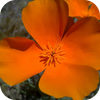
Eschscholzia californica
Mikado

Linum rubrum
Scarlet Flax

Lychinis chalcedonica
Maltese Cross

Papaver rhoeas
Red Corn Poppy

Papaver rhoeas
Shirley Single Mix

Phlox drummondii
Annual Red

Tagetes erecta
French Marigold

Trifolium incarnatum
Crimson Clover

Zinnia elegens
Zinnia Red
Wildflowers - Poppy Scatter Garden Seed Mix
From $499 USDUnit price /UnavailableDescription

Includes a mix of 6 of the most vibrant and beautiful Poppy flower varieties. Scatter this mix in your garden and enjoy a beautiful assortment of Poppy flowers!
Wildflower establishment requires some important steps:- Site selection/preparation: It's important to address competition from weeds: pull, till, or use organic herbicides. If planting in the spring/summer you can wait for weeds to germinate, control and then plant the wildflower seeds.
- Seeding: You will want to have good seed to soil contact, broadcasting by hand is a good approach on small plot, may want to mix with an inert carrier, sand or other. Raking in and covering with soil 2-3 times seed thickness.
- Watering: During establishment for the first month, can be from rain in spring or supplement with irrigation.
- Timing: The best time to plant is in spring to early summer and even again in late fall.
This mix includes all of the following seed varieties:GENUS/SPECIES
COMMON NAME

Eschscholzia californica
California Poppy Orange
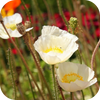
Eschscholzia californica
California Poppy White

Eschscholzia californica
Mikado

Eschscholzia californica
Mission Bells

Papaver rhoeas
Red Corn Poppy

Papaver rhoeas
Shirley Mix Poppy
Wildflowers - Partial Shade Scatter Garden Seed Mix
From $499 USDUnit price /UnavailableDescription
 Plant this mix in an area of your garden that gets partial shade. Includes a mix of 15 different shade tolerant (less than 6 hours of sunlight per day) flower varieties.
Plant this mix in an area of your garden that gets partial shade. Includes a mix of 15 different shade tolerant (less than 6 hours of sunlight per day) flower varieties.
Wildflower establishment requires some important steps:- Site selection/preparation: It's important to address competition from weeds: pull, till, or use organic herbicides. If planting in the spring/summer you can wait for weeds to germinate, control and then plant the wildflower seeds.
- Seeding: You will want to have good seed to soil contact, broadcasting by hand is a good approach on small plot, may want to mix with an inert carrier, sand or other. Raking in and covering with soil 2-3 times seed thickness.
- Watering: During establishment for the first month, can be from rain in spring or supplement with irrigation.
- Timing: The best time to plant is in spring to early summer and even again in late fall.This mix includes the following:
GENUS/SPECIES
COMMON NAME
TYPE
HEIGHT

Aquilegia vulgaris
Garden Columbine
P
10-18"

Centaurea cyanus
Bachelor's Button
A
12-36"

Cheiranthus allionii
Siberian Wallflower
B/P
10-18"
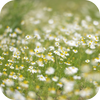
Chrysanthemum maximum
Daisy Chrysanthemum
P
16-24"
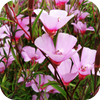
Clarkia elegans
Clarkia Mix
A
18-30"

Coreopsis lanceolata
Lance Leaf Coreopsis
P
18-36"

Coreopsis tinctoria
Plains Coreopsis
A
12-36"
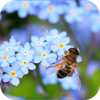
Cynoglossum amabile
Chinese Forget-Me-Not
A/B
18-24"
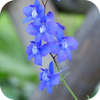
Delphinium consolida
Rocket Larkspur
A
12-36"

Dianthus barbatus
Sweet William
P
12-24"

Digitalis purpurea
Common Foxglove
B/P
24-48"

Gypsophila elegans
Annual Baby's Breath
A
8-18"
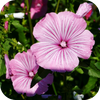
Lavatera trimestris
Rose Mallow
A
24-48"
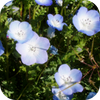
Nemophila menziesii
Baby Blue Eyes
A
4-12"

Papaver rhoeas
Shirley Poppy
A
12-30"
A-Annual
59%
P-Perennial
15%
B-Biennial
26%
Wildflowers - Northeast Seed Mix
From $499 USDUnit price /UnavailableDescription
The Northeast Wildflower Seed Mix is a carefully curated blend of native wildflower species that thrive in the northeastern United States. This mix is designed to support local ecosystems, attract pollinators, and enhance the aesthetic appeal of gardens and landscapes. By incorporating native plants, gardeners can contribute to biodiversity and create sustainable habitats for various wildlife.
Native wildflowers are adapted to the local climate and soil conditions, making them more resilient and easier to maintain compared to non-native species. For instance, many wildflowers in this mix require less water and are more resistant to pests and diseases. Studies indicate that native plants can reduce the need for chemical fertilizers and pesticides by up to 50%, promoting a healthier garden environment.
In addition to their ecological benefits, wildflowers provide essential resources for pollinators such as bees, butterflies, and hummingbirds. Research shows that gardens with a diverse array of native plants can support up to 50% more pollinator species than those with non-native plants. This is crucial for maintaining healthy ecosystems, as pollinators play a vital role in the reproduction of many flowering plants and the production of fruits and vegetables.
When planting a Northeast Wildflower Seed Mix, it is important to consider the specific growing conditions of your garden. Factors such as soil type, sunlight exposure, and moisture levels can significantly influence the success of your wildflower garden. For optimal results, select a location that receives full sun to partial shade and has well-drained soil. It is also advisable to prepare the soil by removing weeds and loosening the top layer to encourage seed germination.
Once planted, the wildflower seeds typically germinate within 7 to 14 days, depending on the species and environmental conditions. It is essential to monitor the garden during the early stages of growth, ensuring that the seedlings receive adequate moisture. After establishment, these wildflowers will require minimal maintenance, allowing gardeners to enjoy a vibrant and low-maintenance landscape.
In conclusion, the Northeast Wildflower Seed Mix is an excellent choice for gardeners looking to enhance their outdoor spaces while supporting local ecosystems. By choosing native wildflowers, gardeners can create beautiful, sustainable gardens that benefit both the environment and the community. With proper care and consideration of local conditions, this seed mix can flourish, providing a stunning display of color and attracting a variety of beneficial wildlife.
Wildflowers - North America Seed Mix
From $499 USDUnit price /UnavailableDescription
North America is home to a diverse array of wildflower species, many of which can be successfully cultivated in garden settings. Utilizing a wildflower seed mix specifically designed for North American climates can enhance biodiversity, support local ecosystems, and create visually appealing landscapes. These seed mixes typically contain a variety of native species that are well-adapted to local soil and climate conditions.
Wildflower seed mixes often include species such as Black-eyed Susan (Rudbeckia hirta), Purple Coneflower (Echinacea purpurea), and Butterfly Weed (Asclepias tuberosa) and so much more. Each of these species plays a crucial role in supporting pollinators, including bees and butterflies, which are essential for the health of many ecosystems. Studies indicate that native plants can increase pollinator populations by up to 50%, contributing to improved pollination services for both wild and cultivated plants.
When selecting a wildflower seed mix, it is important to consider the specific growing conditions of your garden. Factors such as soil type, sunlight exposure, and moisture levels can significantly influence the success of wildflower cultivation. For instance, some species thrive in well-drained sandy soils, while others prefer moist, loamy conditions. A well-chosen mix can provide a continuous bloom throughout the growing season, with some species flowering in early spring and others in late summer or fall.
Incorporating a North America wildflower seed mix into your garden can also contribute to soil health. Native wildflowers often have deep root systems that improve soil structure and reduce erosion. Additionally, these plants can enhance nutrient cycling and support beneficial microorganisms in the soil. Research suggests that gardens with diverse plant species can improve soil organic matter by as much as 20%, leading to healthier growing conditions for all plants.
Furthermore, wildflower gardens require less maintenance compared to traditional lawns or ornamental gardens. Once established, many native wildflowers are drought-tolerant and require minimal watering. This can lead to significant water savings, particularly in regions prone to drought. According to the U.S. Environmental Protection Agency, native landscaping can reduce water usage by up to 50% compared to non-native plantings.
In conclusion, incorporating a North America wildflower seed mix into your garden not only enhances its aesthetic appeal but also promotes ecological health and sustainability. By choosing native species, gardeners can support local wildlife, improve soil health, and reduce maintenance efforts, making wildflower gardens a practical and beneficial choice for both the environment and the gardener.
Wildflowers - Moist Area Scatter Garden Seed Mix
From $499 USDUnit price /UnavailableDescription
 Includes a mix of 16 different beautiful flower varieties. Cover moist spaces with moist soi tolerant wildflowers! Mix includes annuals and perennials. Easy to grow and require little maintenance.
Includes a mix of 16 different beautiful flower varieties. Cover moist spaces with moist soi tolerant wildflowers! Mix includes annuals and perennials. Easy to grow and require little maintenance.
Wildflower establishment requires some important steps:- Site selection/preparation: It's important to address competition from weeds: pull, till, or use organic herbicides. If planting in the spring/summer you can wait for weeds to germinate, control and then plant the wildflower seeds.
- Seeding: You will want to have good seed to soil contact, broadcasting by hand is a good approach on small plot, may want to mix with an inert carrier, sand or other. Raking in and covering with soil 2-3 times seed thickness.
- Watering: During establishment for the first month, can be from rain in spring or supplement with irrigation.
- Timing: The best time to plant is in spring to early summer and even again in late fall.This mix includes the following:
GENUS/SPECIES
COMMON NAME
TYPE
HEIGHT
COLOR

Aquilegia vulgaris
Dwarf European Columbine
P
10 to 18
Red/Violet/Blue

Centaurea cyanus
Bachelor's Button
A
12 to 36
Blue or Mix

Cheiranthus allionii
Siberian Wallflower
B/P
10 to 18
Orange

Chrysanthemum maximum
Daisy Chrysanthemum
B/P
16 to 24
White

Clarkia elegans
Clarkia Mix
A
18 to 30
Pink/Lavender

Coreopsis lanceolata
Lance Leaf Coreopsis
P
18 to 36
Yellow

Coreopsis tinctoria
Plains Coreopsis
A
12 to 36
Yellow-Maroon

Collinsia heterophylla
Chinese Houses
A
12 to 24
White-Violet

Delphinium consolida
Rocket Larkspur
A
12 to 36
White/Pink/Blue/Violet

Dianthus barbatus
Sweet William
P
12 to 24
White/Pink/Red
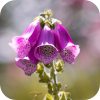
Digitalis purpurea
Common Foxglove
B/P
24 to 48
Purple/Cream

Gypsophila elegans
Annual Baby's Breath
A
8 to 18
White

Lavatera trimestris
Rose Mallow
A
24 to 48
White/Pink

Nemophila menziesii
Baby Blue Eyes
A
4 to 12
Blue

Papaver rhoeas
Shirley Poppy
A
12 to 30
White/Pink/Red

Viola cornuta
Helen Mount
A/P
4 to 12
Purple/Yellow/Blue
A- Annual
69%
P- Perennial
16%
B- Biennial
15%
Wildflowers - Midwest Seed Mix
From $499 USDUnit price /UnavailableDescription
The Midwest wildflower seed mix is a carefully curated blend of native flowering plants that thrive in the diverse climates of the Midwestern United States. This mix typically includes species such as Black-eyed Susan (Rudbeckia hirta), Purple Coneflower (Echinacea purpurea), and Wild Bergamot (Monarda fistulosa), among others. These plants are not only aesthetically pleasing but also play a crucial role in supporting local ecosystems.
Utilizing a Midwest wildflower seed mix in your garden can yield numerous benefits. Firstly, native wildflowers are adapted to the local environment, which means they require less water and maintenance compared to non-native species. Studies have shown that native plants can reduce water usage by up to 50% once established, making them an environmentally sustainable choice for gardeners.
Moreover, these wildflowers provide essential habitat and food sources for pollinators such as bees, butterflies, and hummingbirds. Research indicates that gardens with native plants can support up to 10 times more pollinator species than those with non-native plants. This increase in biodiversity is vital for the health of ecosystems, as pollinators are responsible for the reproduction of approximately 75% of flowering plants worldwide.
When planting a Midwest wildflower seed mix, it is important to consider the soil type, sunlight, and moisture levels of your garden. Most wildflowers prefer well-drained soil and full sun exposure, although some species can tolerate partial shade. It is advisable to conduct a soil test to determine pH levels and nutrient content, which can guide the selection of appropriate wildflower species for your specific garden conditions.
To establish a successful wildflower garden, it is recommended to prepare the soil by removing any existing vegetation and loosening the top layer. Broadcasting the seeds evenly across the prepared area and lightly raking them into the soil can enhance germination rates. It is crucial to keep the soil moist during the initial growth phase, which typically lasts for several weeks.
In conclusion, incorporating a Midwest wildflower seed mix into your garden not only enhances its visual appeal but also contributes to ecological health. By choosing native species, gardeners can create sustainable landscapes that support local wildlife, reduce resource consumption, and promote biodiversity. As awareness of the importance of native plants continues to grow, the Midwest wildflower seed mix stands out as a practical and beneficial choice for environmentally conscious gardeners.
Wildflowers - Lupine Scatter Garden Seed Mix
From $499 USDUnit price /UnavailableDescription
 Includes a mix of 5 popular lupine flower varieties and colors. Scatter this mix of seeds in your garden and enjoy a beautiful assortment of lupine flowers.Wildflower establishment requires some important steps:- Site selection/preparation: It's important to address competition from weeds: pull, till, or use organic herbicides. If planting in the spring/summer you can wait for weeds to germinate, control and then plant the wildflower seeds.
Includes a mix of 5 popular lupine flower varieties and colors. Scatter this mix of seeds in your garden and enjoy a beautiful assortment of lupine flowers.Wildflower establishment requires some important steps:- Site selection/preparation: It's important to address competition from weeds: pull, till, or use organic herbicides. If planting in the spring/summer you can wait for weeds to germinate, control and then plant the wildflower seeds.
- Seeding: You will want to have good seed to soil contact, broadcasting by hand is a good approach on small plot, may want to mix with an inert carrier, sand or other. Raking in and covering with soil 2-3 times seed thickness.
- Watering: During establishment for the first month, can be from rain in spring or supplement with irrigation.
- Timing: The best time to plant is in spring to early summer and even again in late fall.
This mix includes all of the following seed varieties:GENUS/SPECIES
COMMON NAME

Lupinus densiflora
Golden Yellow

Lupinus hartwegii
Dwarf Pixie Delight

Lupinus perennis
Perennial Lupine

Lupinus polyphyllus
Russel Lupine

Lupinus succulentis
Arroyo Lupine
Wildflowers - Low Grow Scatter Garden Seed Mix
From $499 USDUnit price /UnavailableDescription
 Includes a mix of 17 different beautiful flower varieties. A mostly annual flower seed mix that blooms quickly and stays below knee high. Great for containers and edges.
Includes a mix of 17 different beautiful flower varieties. A mostly annual flower seed mix that blooms quickly and stays below knee high. Great for containers and edges.
Wildflower establishment requires some important steps:- Site selection/preparation: It's important to address competition from weeds: pull, till, or use organic herbicides. If planting in the spring/summer you can wait for weeds to germinate, control and then plant the wildflower seeds.
- Seeding: You will want to have good seed to soil contact, broadcasting by hand is a good approach on small plot, may want to mix with an inert carrier, sand or other. Raking in and covering with soil 2-3 times seed thickness.
- Watering: During establishment for the first month, can be from rain in spring or supplement with irrigation.
- Timing: The best time to plant is in spring to early summer and even again in late fall.This mix includes the following:
GENUS/SPECIES
COMMON NAME
TYPE
HEIGHT
COLOR

Centaurea cyanus
Bachelor Button dwf.
A
12 to 36
Blue or Mix

Cheiranthus allionii
Siberian Wallflower
B/P
10 to 18
Orange

Clarkia amoena
Farewell to Spring dwf.
A
8 to 14
Pink/White

Collinsia heterophyla
Chinese Houses
A
12 to 24
White-Violet

Coreopsis lanceolata
Lance Leaf Coreopsis dwf.
P
18 to 36
Yellow

Coreopsis tinctoria
Plains Coreopsis dwf.
A
12 to 36
Yellow-Maroon

Cynoglossum firmament
Chinese Forget Me Not
A/B
18 to 24
Blue

Dianthus barbatus
Sweet William
P
12 to 24
White/Pink/Red

Dimorphotheca aurantiaca
African Daisy
A
8 to 16
Orange/Salmon/White

Eschscholtzia californica
California Poppy
TP
12 to 18
Yellow/Orange

Gypsophila elegans
Baby's Breath
A
8 to 18
White

Iberis umbellata
Candytuft
A
12 to 18
White/Pink/Violet

Linum lewisii
Blue Flax
P
18 to 30
Blue

Lobularia maritima
Sweet Alyssum
TP
8 to 16
White

Nemophila menziesii
Baby Blue Eyes
A
4 to 12
Blue

Phacelia campanularia
California Bluebells
A
8 to 20
Blue

Silene armeria
Catchfly
A/B
16 to 22
Pink
A=ANNUAL
59%
P=PERENNIAL
14%
TP= TENDER PERENNIALS
13%
B=BIANNUAL
14%
Wildflowers - Hummingbird & Butterfly Scatter Garden Seed Mix
From $499 USDUnit price /UnavailableDescription
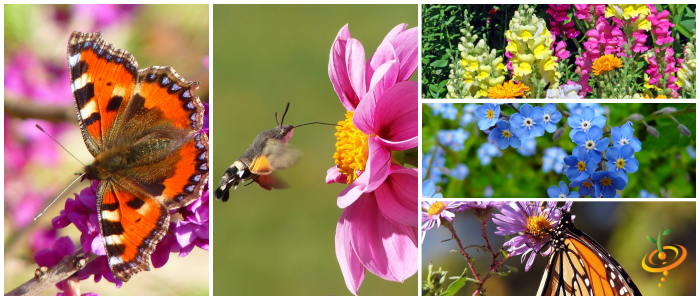
Includes a mix of the 23 of the most popular flower varieties known to attract Hummingbirds and Butterflies! Scatter this mix of seeds in your garden for the most beautiful assortment of flowers you've ever seen.
Wildflower establishment requires some important steps:
Site selection/preparation: It's important to address competition from weeds: pull, till, or use organic herbicides. If planting in the spring/summer you can wait for weeds to germinate, control and then plant the wildflower seeds.Seeding: You will want to have good seed to soil contact, broadcasting by hand is a good approach on small plot, may want to mix with an inert carrier, sand or other. Raking in and covering with soil 2-3 times seed thickness.Watering: During establishment for the first month, can be from rain in spring or supplement with irrigation.Timing: The best time to plant is in spring to early summer and even again in late fall.
This mix includes all of the following seed varieties:GENUS/ SPECIES
COMMON NAME
PLANT TYPE
PLANT HEIGHT (inches)
FLOWER COLORS
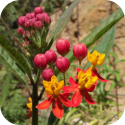
1. Asclepias tuberosa
Butterfly Milkweed
Perennial
24 to 36
Orange

2. Aquilegia caerulea
Mrs. Scott Elliot
Perennial
24 to 36
Yellow/Red/Violet/Blue

3. Antirrhinum tetra
Snapdragon
Annual
24 to 36
Lavender/Yellow/Pink/White

4. Callistephus chinensis
Aster
Annual
24 to 36
Blue/Pink/White/Purple

5. Cosmos bipinnatus
Cosmos Sensation Mix
Annual
36 to 60
White/Pink/Crimson/Rose
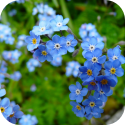
6. Cynoglossum amabile
Chinese Forget Me Not
Annual/
Biannual18 to 20
Blue

7. Delphinium consolida
Larkspur Giant Imperial Mix
Annual
12 to 26
White/Pink/Blue/Violet

8. Digitalis purpurea
Foxglove
Biannual/
Perrenial24 to 48
Purple/Cream

9. Gilia tricolor
Bird's Eyes
Annual
12 to 18
Lavender-White

10. Lavatera trimestris
Treemallow
Annual
24 to 48
White/Pink

11. Linaria maroccana
Toadflax
Annual
12 to 24
Pink/Yellow/Violet

12. Lobularia maritima
Alyssum, Carpet of Snow
Annual
8 to 16
White

13. Lychnis chalcedonica
Maltese Cross
Perennial
24 to 36
Scarlet

14. Mirabilis jalapa
Four O'clock
Tender
Perennial12 to 24
Red/Pink/Yellow.White

15. Monarda citriodora
Lemon Mint
Annual
12 to 24
Lavender/White

16. Nicotiana alata
Tobacco Plant
Annual
12 to 24
Red/White/Green/Yellow

17. Papaver rhoeas
Red Corn Poppy
Annual
12 to 30
Red

18. Penstemon strictus
Gloxinia Penstemon
Perennial
24 to 36
Blue

19. Salvia coccinea
Scarlet Sage
Annual/
Perennial12 to 24
Red

20. Silene armeria
Catchfly
Annual/
Biannual16 to 22
Pink

21. Tagetes erecta
Marigold Crackerjack
Annual
24 to 36
Yellow/Orange

22. Tropaeolum majus
Nasturtium Dwarf Jewel
Annual
12 to 36
Red/Yellow/Orange/Pink

23. Zinnia elegans
Zinnia
Annual
12 to 36
White/Purple/Yellow/Orange/Red
Wildflowers - Fragrant Flower Scatter Garden Seed Mix
From $499 USDUnit price /UnavailableDescription
 Includes a mix of 18 popular fragrant flower varieties and colors. Scatter this mix of seeds in your garden and enjoy the most fragrant flower assortment you've ever smelt.Wildflower establishment requires some important steps:- Site selection/preparation: It's important to address competition from weeds: pull, till, or use organic herbicides. If planting in the spring/summer you can wait for weeds to germinate, control and then plant the wildflower seeds.
Includes a mix of 18 popular fragrant flower varieties and colors. Scatter this mix of seeds in your garden and enjoy the most fragrant flower assortment you've ever smelt.Wildflower establishment requires some important steps:- Site selection/preparation: It's important to address competition from weeds: pull, till, or use organic herbicides. If planting in the spring/summer you can wait for weeds to germinate, control and then plant the wildflower seeds.
- Seeding: You will want to have good seed to soil contact, broadcasting by hand is a good approach on small plot, may want to mix with an inert carrier, sand or other. Raking in and covering with soil 2-3 times seed thickness.
- Watering: During establishment for the first month, can be from rain in spring or supplement with irrigation.
- Timing: The best time to plant is in spring to early summer and even again in late fall.
This mix includes all of the following seed varieties:GENUS/SPECIES
COMMON NAME
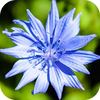
Centaurea cyanus
Cornflower
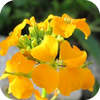
Cheiranthus allionii
Siberian Wallflower

Cynoglossum amabile
Chinese Forget Me Not

Dianthus barbatus
Sweet William
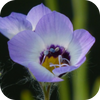
Gilia tricolor
Bird's Eyes

Iberis umbelleta
Candytuft

Lathyrus odoratus
Sweet Pea

Lavender Vera
Lavender

Lobularia maritima
Sweet Alyssum

Matthiola bicornis
Evening Scented Stock
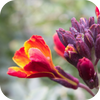
Mirabilis jalapa
Four O' Clock

Monarda punctata
Spotted Bee Balm
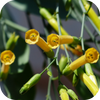
Nicotiana affinis
Tabacco mix
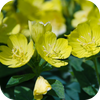
Oenothera lamarkiana
Evening Primrose

Reseda ordorata
Mignonette
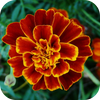
Tagetes patula
Marigold Sparky

Tropaeulum majus
Nasturtium

Viola cornuta
Helen Mount
Wildflowers - Forever Pink Scatter Garden Seed Mix
From $499 USDUnit price /UnavailableDescription
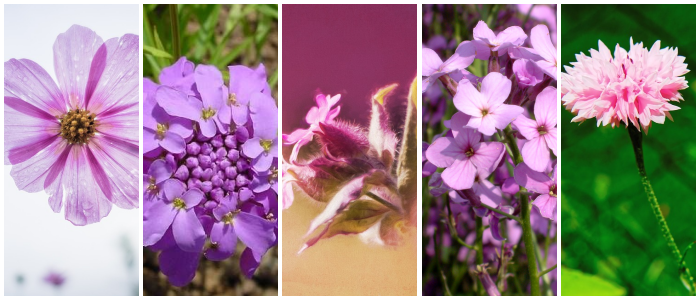 Includes a mix of 9 of the most vibrant and beautiful pink flower varieties. Scatter this mix in your garden and enjoy a beautiful assortment of pink flowers!Wildflower establishment requires some important steps:- Site selection/preparation: It's important to address competition from weeds: pull, till, or use organic herbicides. If planting in the spring/summer you can wait for weeds to germinate, control and then plant the wildflower seeds.
Includes a mix of 9 of the most vibrant and beautiful pink flower varieties. Scatter this mix in your garden and enjoy a beautiful assortment of pink flowers!Wildflower establishment requires some important steps:- Site selection/preparation: It's important to address competition from weeds: pull, till, or use organic herbicides. If planting in the spring/summer you can wait for weeds to germinate, control and then plant the wildflower seeds.
- Seeding: You will want to have good seed to soil contact, broadcasting by hand is a good approach on small plot, may want to mix with an inert carrier, sand or other. Raking in and covering with soil 2-3 times seed thickness.
- Watering: During establishment for the first month, can be from rain in spring or supplement with irrigation.
- Timing: The best time to plant is in spring to early summer and even again in late fall.
This mix includes all of the following seed varieties:GENUS/SPECIES
COMMON NAME

Centaurea cyanus
Cornflower Tall Pink
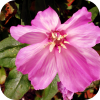
Clarkia amoena
Godetia Semi Dwf Mix

Cosmos bippinatus
Pinkie Dwarf
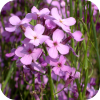
Hesperis matronalis
Purple Dame's Rocket

Iberis umbellata
Dwf. Candytuft Fairy Bqt.

Lavatera trimestris
Tree Mallow

Monarda citriodora
Lemon Mint

Silene armeria
Catchfly

Silene pendula
Nodding Catchfly
Wildflowers - Exotic Mountain Scatter Garden Seed Mix
From $499 USDUnit price /UnavailableDescription
 Includes a mix of 17 of the most vibrant and beautiful flower varieties you've ever seen. Scatter this mix in your garden. Specifically for elevations above 7,000 feet in western continental U.S.Wildflower establishment requires some important steps:- Site selection/preparation: It's important to address competition from weeds: pull, till, or use organic herbicides. If planting in the spring/summer you can wait for weeds to germinate, control and then plant the wildflower seeds.
Includes a mix of 17 of the most vibrant and beautiful flower varieties you've ever seen. Scatter this mix in your garden. Specifically for elevations above 7,000 feet in western continental U.S.Wildflower establishment requires some important steps:- Site selection/preparation: It's important to address competition from weeds: pull, till, or use organic herbicides. If planting in the spring/summer you can wait for weeds to germinate, control and then plant the wildflower seeds.
- Seeding: You will want to have good seed to soil contact, broadcasting by hand is a good approach on small plot, may want to mix with an inert carrier, sand or other. Raking in and covering with soil 2-3 times seed thickness.
- Watering: During establishment for the first month, can be from rain in spring or supplement with irrigation.
- Timing: The best time to plant is in spring to early summer and even again in late fall.
This mix includes all of the following seed varieties:GENUS/SPECIES
COMMON NAME
HEIGHT
TYPE
COLOR
Aquilegia caerulea
Columbine
24"-36"
P
Y, R, V, B

Centaurea cyanus
Cornflower
12"-36"
A
B or mix

Cheiranthus allionii
Siberian Wallflower
16"-24"
B/P
O

Chrysanthemum maximum
Shasta Daisy
16"-24"
P
W

Coreopsis tinctoria
Plains Coreopsis
12"-36"
A
Y, M

Dianthus barbatus
Sweet William
12"-24"
P
W,P,R

Dimorphotheca aurantiaca
African Daisy
8"-16"
A
O,S,W

Eschscholtzia californica
California Poppy
12"-18"
A
Y,O

Gaillardia aristata
Perennial Gaillardia
18"-30"
PA
Y,R

Gypsophila elegans
Annual Baby's Breath
8"-18"
P
W

Linum lewisii
Blue Flax
18"-30"
B/P
B

Lobularia maritima
Sweet Alyssum
8"-16"
P
W

Oenothera lamarckiana
Evening Primrose
24"-60"
B/P
Y

Penstemon strictus
Rocky Mtn. Penstemon
24"-36"
P
B

Ratibida columnifera
Prairie Coneflower
12"-36"
B/P
R,Y

Rudbeckia hirta
Black Eyed Susan
12"-36"
A/B/P
Y

Silene armeria
Catchfly
16"-22"
A
P
A-Annual
52%
Y- YELLOW
P-Perennial
24%
R-Red
B-Biennal
24%
V-Violet
B-Blue
W-White
M-Maroon
O-Orange
P-Purple
S-Salmon
Wildflowers - Dryland Scatter Garden Seed Mix
From $499 USDUnit price /UnavailableDescription
 Includes a mix of 21 different beautiful flower varieties. Cover dry spaces with drought tolerant wildflowers! Mix includes annuals and perennials. Easy to grow and require little maintenance
Includes a mix of 21 different beautiful flower varieties. Cover dry spaces with drought tolerant wildflowers! Mix includes annuals and perennials. Easy to grow and require little maintenance
Wildflower establishment requires some important steps:- Site selection/preparation: It's important to address competition from weeds: pull, till, or use organic herbicides. If planting in the spring/summer you can wait for weeds to germinate, control and then plant the wildflower seeds.
- Seeding: You will want to have good seed to soil contact, broadcasting by hand is a good approach on small plot, may want to mix with an inert carrier, sand or other. Raking in and covering with soil 2-3 times seed thickness.
- Watering: During establishment for the first month, can be from rain in spring or supplement with irrigation.
- Timing: The best time to plant is in spring to early summer and even again in late fall.This mix includes the following:
Genus/Species
Common Name
HEIGHT
TYPE
COLOR

Centaurea cyanus
Cornflower
36"
A
Blue

Cheiranthus allionii
Siberian Wallflower
18"
B
Orange

Chrysanthemum maximum
Shasta Daisy
36"
P
White
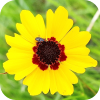
Coreopsis tinctoria
Plains Coreopsis
36"
A
Yellow/Red

Dianthus barbatus
Sweet William
24"
B
Mix

Dimorphotheca auranantiaca
African Daisy
12"
A
Yellow

Echinacea purpurea
Purple Coneflower
36"
P
Purple

Eschscholtzia californica
California Poppy
12"
A
Orange

Gaillardia aristata
Perennial Gaillardia
24"
P
Yellow/Red

Gaillardia pulchella
Annual Gaillardia
24"
A
Yellow/Red

Gypsophila elegans
Annual Baby's Breath
24"
A
White

Linaria maroccana
Spurred Snapdragon
24"
A
Mix

Linum lewisii
Blue Flax
24"
P
Blue

Lobularia maritima
Sweet Alyssum
10"
A
White

Oenothera lamarckiana
Evening Primrose
36"
B
Yellow

Papaver rhoeas
Corn Poppy
24"
A
Red

Penstemon strictus
Rocky Mtn. Penstemon
36"
P
Blue

Ratibida columnifera
Prairie Coneflower
24"
P
Red

Rudbeckia hirta
Black Eyed Susan
36"
A/B/P
Gold

Rudbeckia hirta
Gloriosa Daisy
36"
A/B/P
Yellow/Red

Silene armeria
Catchfly
18"
A
Pink
ANNUAL
64%
BI-ANNUAL
11%
PERENNIAL
25%
Wildflowers - Deer Resistant Scatter Garden Seed Mix
From $499 USDUnit price /UnavailableDescription
 Includes a mix of the 22 of the most popular flower varieties that deer are known to stay away from. Scatter this mix of seeds in your garden and keep the deer away.Wildflower establishment requires some important steps:- Site selection/preparation: It's important to address competition from weeds: pull, till, or use organic herbicides. If planting in the spring/summer you can wait for weeds to germinate, control and then plant the wildflower seeds.
Includes a mix of the 22 of the most popular flower varieties that deer are known to stay away from. Scatter this mix of seeds in your garden and keep the deer away.Wildflower establishment requires some important steps:- Site selection/preparation: It's important to address competition from weeds: pull, till, or use organic herbicides. If planting in the spring/summer you can wait for weeds to germinate, control and then plant the wildflower seeds.
- Seeding: You will want to have good seed to soil contact, broadcasting by hand is a good approach on small plot, may want to mix with an inert carrier, sand or other. Raking in and covering with soil 2-3 times seed thickness.
- Watering: During establishment for the first month, can be from rain in spring or supplement with irrigation.
- Timing: The best time to plant is in spring to early summer and even again in late fall.
This mix includes all of the following seed varieties:GENUS/SPECIES
COMMON NAME
TYPE
HEIGHT
COLOR

Achillea millefolium
Yarrow
P
12 to 36
White

Aquilegia caerulea
Columbine
p
24 to 36
Yellow'/Red/Violet/Blue

Centaurea cyanus
Bachelor Buttons
A
12 to 36
Blue or Mix

Chrysanthemum maximum
Shasta Daisy
P
16 to 24
White

Clarkia amoena
Godetia
A
8 to 14
Pink/White

Coreopsis lanceolata
Lance Leaf Coreopsis
P
18 to 36
Yeloow

Delphinium consolida
Larkspur
A
12 to 36
Whie/Pink/Blue/Violet

Digitalis purpurea
Foxglove
B/P
24 to 48
Purple/Cream

Echinacea purpurea
Purple Coneflower
P
24 to 36
Purple

Eschscholzia californica
California Poppy
TP
12 to 18
Yellow/Orange

Gaillardia aristata
Blanketflower
P
18 to 30
Yellow-Red

Iberis umbellata
Candytuft
A
12 to 18
White/Pink/Violet

Liatris spicata
Gayfeather
P
24 to 48
Purple

Lupinus perennis
Lupine
P
12 to 36
Blue

Monarda citriodora
Lemon Mint
A
12 to 24
Lavander/White

Papaver rhoeas
Red shirley poppy
A
12 to 30
Red

Papaver rhoeas
Mixed Shirley Poppy
A
12 to 30
White/Pink/Red

Ratibida columnifera
Red Prairie Coneflower
B/P
12 to 36
Red/Yellow

Ratibida columnifera
Yellow Prairie Coneflower
B/P
12 to 36
Yellow

Rudbeckia hirta
Black Eyed Susan
A/B/P
12 to 36
Yellow

Salvia coccinea
Scarlet Sage
A/P
12 to 24
Red

Viscaria occulata
Soapwort
A
9 to 12
Pink
Annual
41%
PERENNIAL
59%
Wildflowers - Cosmos Flower Scatter Garden Seed Mix
From $499 USDUnit price /UnavailableDescription
Includes a mix of 7 popular cosmos flower varieties. Scatter this mix in your garden and enjoy a beautiful assortment of cosmos flowers!
Wildflower establishment requires some important steps:
- Site selection/preparation: It's important to address competition from weeds: pull, till, or use organic herbicides. If planting in the spring/summer you can wait for weeds to germinate, control and then plant the wildflower seeds.
- Seeding: You will want to have good seed to soil contact, broadcasting by hand is a good approach on small plot, may want to mix with an inert carrier, sand or other. Raking in and covering with soil 2-3 times seed thickness.
- Watering: During establishment for the first month, can be from rain in spring or supplement with irrigation.
- Timing: The best time to plant is in spring to early summer and even again in late fall.
This mix includes all of the following seed varieties:GENUS/SPECIES
COMMON NAME
Cosmos bippinatus
Cosmos, Sensation Mix
Cosmos bippinatus
Dazzler
Cosmos bippinatus
Gloria
Cosmos bippinatus
Picotee
Cosmos bippinatus
Pinkie
Cosmos bippinatus
Purity
Cosmos sulphureus
Sulphur Cosmos
Wildflowers - Coneflower Scatter Garden Seed Mix
From $499 USDUnit price /UnavailableDescription
 Includes a mixture of 6 popular coneflower varieties. Scatter this mix in your garden and enjoy a beautiful assortment of coneflowers!
Includes a mixture of 6 popular coneflower varieties. Scatter this mix in your garden and enjoy a beautiful assortment of coneflowers!Wildflower establishment requires some important steps:
- Site selection/preparation: It's important to address competition from weeds: pull, till, or use organic herbicides. If planting in the spring/summer you can wait for weeds to germinate, control and then plant the wildflower seeds.
- Seeding: You will want to have good seed to soil contact, broadcasting by hand is a good approach on small plot, may want to mix with an inert carrier, sand or other. Raking in and covering with soil 2-3 times seed thickness.
- Watering: During establishment for the first month, can be from rain in spring or supplement with irrigation.
- Timing: The best time to plant is in spring to early summer and even again in late fall.
This mix includes all of the following seed varieties:GENUS/SPECIES
COMMON NAME

Echinacea purpurea
Purple Coneflower

Echinacea palladia
Pale Purple Coneflower

Rudbeckia amplexicaulis
Clasping Coneflower

Ratibida columnifera
Red Mexican Hat

Ratibida columnifera
Yellow Prairie Coneflower

Ratibida pinnata
Greyheaded Coneflower
Wildflowers - California Native Scatter Garden Seed Mix
From $499 USDUnit price /UnavailableDescription
 Includes a mix of 24 popular Native California Wildflower varieties. Scatter this mix in your garden and enjoy a beautiful assortment of Native California Wildflowers.Wildflower establishment requires some important steps:- Site selection/preparation: It's important to address competition from weeds: pull, till, or use organic herbicides. If planting in the spring/summer you can wait for weeds to germinate, control and then plant the wildflower seeds.
Includes a mix of 24 popular Native California Wildflower varieties. Scatter this mix in your garden and enjoy a beautiful assortment of Native California Wildflowers.Wildflower establishment requires some important steps:- Site selection/preparation: It's important to address competition from weeds: pull, till, or use organic herbicides. If planting in the spring/summer you can wait for weeds to germinate, control and then plant the wildflower seeds.
- Seeding: You will want to have good seed to soil contact, broadcasting by hand is a good approach on small plot, may want to mix with an inert carrier, sand or other. Raking in and covering with soil 2-3 times seed thickness.
- Watering: During establishment for the first month, can be from rain in spring or supplement with irrigation.
- Timing: The best time to plant is in spring to early summer and even again in late fall.
This mix includes all of the following seed varieties:GENUS/SPECIES
COMMON NAME
TYPE
COLOR
Height

Achillea millefolium
White Yarrow
P
White
12 to 36

Alyssum maritimum
Sweet Alyssum
A
White
8 to 16

Centaurea cyanus
Cornflower
A
Blue
12 to 36

Cheiranthus allionii
Siberian Wallflower
B
Orange
10 to 18

Chyrsanthemum coronarium
Garland Daisy
A
White/Yellow
36 to 48

Chrysanthemum maximum
Shasta Daisy
P
White
16 to 24

Clarkia amoena
Farewell To Spring
A
Pink/White
8 to 14

Clarkia elegans
Clarkia
A
Pink/White
18 to 30

Coreopsis lanceolata
Lance-Leaf Coreopsis
P
Yellow
18 to 36

Coreopsis tinctoria
Plains Coreopsis
A
Yellow
12 to 36

Cynoglossum firmament
Chinese Forget Me Not
A
Blue
18 to 24

Delphinuim consolida
Larkspur
A
Mix
12 to 36

Eschscholtzia californica
California Poppy
A
Orange
12 to 18

Gypsophila elegans
Annual Baby's Breath
A
White
8 to 18

Linaria maroccana
Spurred Snapdragon
A
Mix
12 to 24

Linum lewisii
Blue Flax
P
Blue
18 to 30
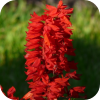
Linum grandiflorum rubrum
Scarlet Flax
A
Scarlet
12 to 36
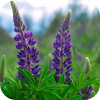
Lupinus perennis
Perennial Lupine
P
Blue
12 to 36

Nemophila menziesii
Baby Blue Eyes
A
Blue
4 to 12

Oenothera lamarckiana
Evening Primrose
B
Yellow
24 to 36

Papaver rhoeas
Corn Poppy
A
Red/Pink
12 to 30

Phacelia campanularia
California Bluebell
A
Blue
8 to 20

Rudbeckia hirta
Black Eyed Susan
B
Gold
12 to 36

Silene armeria
Catchfly
A
Purple
16 to 22
A = ANNUL 74%
B = BIENNIAL 8%
P = PERENNIAL 18%
Wildflowers - Blues Brothers Seed Mix
From $499 USDUnit price /UnavailableDescription
Plant this mix to grow some of the most beautiful blue-colored flowers you've ever seen!
Wildflower establishment requires some important steps:
- Site selection/preparation: It's important to address competition from weeds: pull, till, or use organic herbicides. If planting in the spring/summer you can wait for weeds to germinate, control and then plant the wildflower seeds.
- Seeding: You will want to have good seed to soil contact, broadcasting by hand is a good approach on small plot, may want to mix with an inert carrier, sand or other. Raking in and covering with soil 2-3 times seed thickness.
- Watering: During establishment for the first month, can be from rain in spring or supplement with irrigation.
- Timing: The best time to plant is in spring to early summer and even again in late fall.
This mix includes all of the following seed varieties:
GENUS/SPECIES COMMON NAME TYPE HEIGHT COLOR 
Centaurea cyanus Bachelor Button, Jubilee Gem or Cornflower Annual 12- 36 Inches Blue 
Centaurea cyanus Chinese Forget-Me-Not or Chinese Hounds Tongue Perennial 18-24 Inches Blue 
Linum lewisii Blue Flax Perennial 18-30 Inches Blue 
Ipomoea alba Morning Glory, Heavenly Blue Annual 8 - 10 Feet Blue 
Lupinus angustifolius Blue Lupine Perennial 12-13 Inches Blue 
Phacelia campanularia California Blue Bells, Desertbells, Desert Bluebells, California-Bluebell, Desert Scorpionweed, and Desert Canterbury Bells. Annual 18-20 Inches Blue 
Nigella damascena Love In a Mist Annual 15 Inches Blue 
Gilia capitata Globe Gilia, Blue-Thimble-Flower, Bluehead Gilia, or Blue Field Gilia Annual 12-24 Inches Blue 
Nemophila menziesii Baby Blue Eyes Annual 6 Inches Blue Wildflowers - Beneficial Insect Garden Seed Mix
From $499 USDUnit price /UnavailableDescription
 Plant this mix to attract beneficial insects such as ladybugs, lacewings, ground beetles and other insects that feed on pests.
Plant this mix to attract beneficial insects such as ladybugs, lacewings, ground beetles and other insects that feed on pests.
Wildflower establishment requires some important steps:- Site selection/preparation: It's important to address competition from weeds: pull, till, or use organic herbicides. If planting in the spring/summer you can wait for weeds to germinate, control and then plant the wildflower seeds.
- Seeding: You will want to have good seed to soil contact, broadcasting by hand is a good approach on small plot, may want to mix with an inert carrier, sand or other. Raking in and covering with soil 2-3 times seed thickness.
- Watering: During establishment for the first month, can be from rain in spring or supplement with irrigation.
- Timing: The best time to plant is in spring to early summer and even again in late fall.
This mix includes all of the following seed varieties:GENUS/SPECIES
COMMON NAME
TYPE
HEIGHT
COLOR

Achillea millefolium
White Yarrow
P
12 to 36
White

Gypsophila elegans
Baby's Breath
A
8 to 18
White

Iberis umbellata
Candytuft
A
12 to 18
White/Pink/Violet
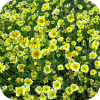
Layia platyglossa
Tidy Tips
A
6 to 12
Yellow-White

Lobularia maritima
Alyssum
TP
8 to 16
White

Nemophila menziesii
Baby Blue Eyes
A
4 to 12
Blue

Phacelia campanularia
California Bluebells
A
8 to 20
Blue

Trifolium repens
White Dutch Clover
P
4 to 10
White
Annual
50%
Perennial
50%
Wildflowers - Bee Scatter Garden Seed Mix
From $499 USDUnit price /UnavailableDescription
Plant this mix to attract bees and other beneficial pollinators. =)

Wildflower establishment requires some important steps:- Site selection/preparation: It's important to address competition from weeds: pull, till, or use organic herbicides. If planting in the spring/summer you can wait for weeds to germinate, control and then plant the wildflower seeds.
- Seeding: You will want to have good seed to soil contact, broadcasting by hand is a good approach on small plot, may want to mix with an inert carrier, sand or other. Raking in and covering with soil 2-3 times seed thickness.
- Watering: During establishment for the first month, can be from rain in spring or supplement with irrigation.
- Timing: The best time to plant is in spring to early summer and even again in late fall.Wildflowers - Annual Cut Flower Scatter Garden Seed Mix
From $499 USDUnit price /UnavailableDescription
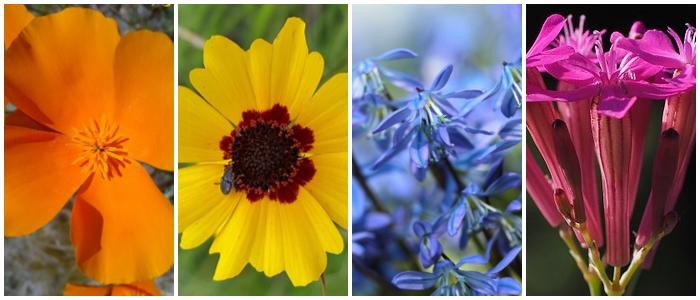 Includes a mix of 25 popular annual flower varieties that will produce a beautiful assortment of flowers suitable for cutting. The mix includes many of the flowers found in floral stores. This annual flower mix will blossom all-year-long creating a bountiful source of flowers.
Includes a mix of 25 popular annual flower varieties that will produce a beautiful assortment of flowers suitable for cutting. The mix includes many of the flowers found in floral stores. This annual flower mix will blossom all-year-long creating a bountiful source of flowers. Scatter this mix of seeds in your garden for the most beautiful assortment of flowers you've ever seen.
Wildflower establishment requires some important steps:- Site selection/preparation: It's important to address competition from weeds: pull, till, or use organic herbicides. If planting in the spring/summer you can wait for weeds to germinate, control and then plant the wildflower seeds.
- Seeding: You will want to have good seed to soil contact, broadcasting by hand is a good approach on small plot, may want to mix with an inert carrier, sand or other. Raking in and covering with soil 2-3 times seed thickness.
- Watering: During establishment for the first month, can be from rain in spring or supplement with irrigation.
- Timing: The best time to plant is in spring to early summer and even again in late fall.
This mix includes all of the following seed varieties:GENUS/SPECIES
COMMON NAME
TYPE
HEIGHT
COLOR

Callistephus chinensis
Aster
A
12 to 36
Blue/Pink/White/Purple

Calendual officinalis
Pot Marigold
A
12 to 24
Yellow/Orange/Cream

Centaurea cyanus
Bachelor Button, Polka Dot Mix
A
12 to 36
Mix

Clarkia amoena
Godetia
A
8 to14
Pink/White
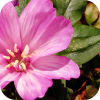
Clarkia elegans
Clarkia
A
18 to 30
Pink/Lavender

Coreopsis tinctoria
Plains Coreopsis
A
12 to 36
Yellow-Maroon

Cosmos bipinnatus
Cosmos, Dwarf Sensation
A
36 to 60
White/Pink/Crimson/Rose

Cynoglossum firmament
Chinese Forget Me Not
A/B
18 to 24
Blue

Delphinium ajacis
Larkspur
A
12 to 36
White/Pink/Blue/Violet

Dimorphotheca aurantiaca
African Daisy
A
8 to16
Orange/Salmon/White

Eschscholzia californica
Poppy, Mission Bells
TP
12 to 18
Yellow/Orange

Gaillardia pulchella
Annual Gaillardia
A
12 to 24
Yellow-Red

Gypsophila elegans
Baby's Breath
A
8 to 18
White

Helianthus annuus
Sunflower
A
24 to 72
Yellow

Helichrysum monstrosum
Strawflower mixed
A
24 to 36
Yellow/White/Red/Pink

Iberis umbellata
Candytuft
A
12 to 18
White/Pink/Violet

Lavateria trimestris mix
Tree mallow
A
24 to 48
White/Pink

Lobularia maritima
Alyssum, tall Sweet
TP
8 to 16
White

Oenotheria lamarckiana
Evening Primrose
B/P
24 to 60
Yellow

Papaver rhoeas
Shirley Poppy
A
12 to 30
White/Pink/red

Phacelia campanularia
California Bluebells
A
8 to 20
Blue

Rubeckia hirta
Black Eyed Susan
A/B/P
12 to 36
Yellow

Silene armeria
Catchfly
A/B
16 to 22
Pink

Tagetes erecta
Marigold
A
12 to 16
Yellow/Orange/Maroon

Zinnia elegans
Zinnia
A
12 to 36
White/Purple/Yellow/Orange.Red
A-Annual
75%
B-Biennial
18%
TP-Tender Perennial
7%
Wildflowers - All Perennial Scatter Garden Seed Mix
From $499 USDUnit price /UnavailableDescription
 Includes a mix of 16 popular perennial flower varieties and colors. Scatter this mix of seeds in your garden and enjoy a beautiful assortment of flowers for multiple years.
Includes a mix of 16 popular perennial flower varieties and colors. Scatter this mix of seeds in your garden and enjoy a beautiful assortment of flowers for multiple years.A perennial plant or simply perennial is a plant that lives for more than two years. The term is often used to differentiate a plant from shorter-lived annuals and biennials. Wikipedia
Wildflower establishment requires some important steps:- Site selection/preparation: It's important to address competition from weeds: pull, till, or use organic herbicides. If planting in the spring/summer you can wait for weeds to germinate, control and then plant the wildflower seeds.
- Seeding: You will want to have good seed to soil contact, broadcasting by hand is a good approach on small plot, may want to mix with an inert carrier, sand or other. Raking in and covering with soil 2-3 times seed thickness.
- Watering: During establishment for the first month, can be from rain in spring or supplement with irrigation.
- Timing: The best time to plant is in spring to early summer and even again in late fall.
This mix includes all of the following seed varieties:GENUS/SPECIES
COMMON NAME
HEIGHT
COLOR

Achillea millefolium
White Yarrow
24-36"
W

Aquilegia vulgaris
Columbine
10-18"
R/V/B

Aster novae angliae
New England Aster
24-36"
B/P/W/P

Cheiranthus allionii
Siberian Wallflower
10-18"
O

Chrysanthemum maximum
Shasta Daisy
16-24"
W

Coreopsis lanceolata Dwarf
Lance-Leaf Coreopsis
18-36"
Y

Dianthus barbatus
Sweet William
12-24"
W/P/R

Echinacea purpurea
Purple Coneflower
24-36"
P

Gaillardia aristata
Blanketflower
18-30"
Y/R

Liatris spicata
Gayfeather
24-48"
P

Linum lewisii
Blue Flax
18-30"
B

Lupinus perennis
Lupine
12-36"
B

Oenothera missouriensis
Dwarf Evening Primrose
8-12"
Y

Ratibida columnifera
Mexican Hat
12-36"
R/Y

Ratibida columnifera
Prairie Coneflower
12-36"
Y

Rudbeckia hirta
Black Eyed Susan
18-30"
Y
W-White
R-Red
V-Violet
B-Blue
Y-Yellow
O-Orange
P-Purple
Wildflowers - All Annual Scatter Garden Seed Mix
From $499 USDUnit price /UnavailableDescription
 Includes a mix of 21 popular annual flower varieties and colors. Scatter this mix of seeds in your garden and enjoy a beautiful assortment of flowers all year.Wildflower establishment requires some important steps:- Site selection/preparation: It's important to address competition from weeds: pull, till, or use organic herbicides. If planting in the spring/summer you can wait for weeds to germinate, control and then plant the wildflower seeds.
Includes a mix of 21 popular annual flower varieties and colors. Scatter this mix of seeds in your garden and enjoy a beautiful assortment of flowers all year.Wildflower establishment requires some important steps:- Site selection/preparation: It's important to address competition from weeds: pull, till, or use organic herbicides. If planting in the spring/summer you can wait for weeds to germinate, control and then plant the wildflower seeds.
- Seeding: You will want to have good seed to soil contact, broadcasting by hand is a good approach on small plot, may want to mix with an inert carrier, sand or other. Raking in and covering with soil 2-3 times seed thickness.
- Watering: During establishment for the first month, can be from rain in spring or supplement with irrigation.
- Timing: The best time to plant is in spring to early summer and even again in late fall.
This mix includes all of the following seed varieties:GENUS/SPECIES
COMMON NAME
TYPE
HEIGHT
COLOR
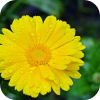
Calendula officinalis
Calendula
A
12 to 24
Yello/Orange/Cream

Centaurea cyanus
Bachelor Button
A
12 to 36
Blue or Mix
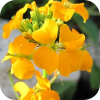
Cheiranthus allionii
Siberian Wallflower
B/P
10 to 18
Orange

Coreopsis tinctoria
Plains Coreopsis
A
12 to 36
Yellow-Maroon

Cosmos bipinnatus
Cosmos
A
36 to 60
White/Pink/Crimson/Rose

Delphinium ajacis
Rocket Larkspur
A
12 to 36
White/Pink/Blue/Violet

Dimorphotheca aurantiaca
African Daisy
A
8 to 16
Orange/Salmon/White

Eschscholtzia californica
California Poppy
TP
12 to 18
Yellow/Orange

Gaillardia pulchella
Indian Blanket
A
12 to 24
Yellow-Red

Gilia tricolor
Bird's Eyes
A
12 to 18
Lavender-White

Gypsophila elegans
Baby's Breath
A
8 to 18
White
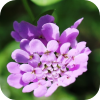
Iberis umbellata
Candytuft
A
12 to 18
White/Pink/Violet

Linaria maroccana
Spurred Snapdragon N. Lights
A
12 to 124
Pink/Yellow/Violet

Linum grandiflorum rubrum
Scarlet Flax
A
12 to 36
Scarlet

Lobularia maritima
Sweet Alyssum
TP
8 to 16
White

Lupinus hartwegii
Lupine
A
12 to 24
Mix

Oenothera lamarckiana
Evening Primrose
B/P
24 to 60
Yellow

Papaver rhoeas
Corn Poppy
A
12 to 30
White/Pink/Red

Phacelia campanularia
California Bluebells
A
8 to 20
Blue

Rudbeckia hirta
Black Eyed Susan
A/B/P
12 to 36
Yellow

Silene armeria
Catchfly
A/B
16 to 22
Pink
- From $199 USDUnit price /Unavailable
Description

Wheat (Organic), Hard Red
-
Hard, brownish, high-protein wheat used for bread and hard baked goods.
- Bread Flour and high-gluten flours are commonly made from.
- Certified Organic.
- Day to Maturity | 75 days
NOTE: THIS PRODUCT CANNOT BE SHIPPED TO CANADA. -
Hard, brownish, high-protein wheat used for bread and hard baked goods.
- From $299 USDUnit price /Unavailable
Description

- A Tom Watson Watermelon Festival is held in Georgia each year in August at Hickory Hill in Thomson, Georgia. The Tom Watson Watermelon seed is a 1900 heirloom variety from Georgia
- Plant produces excellent yields of 40 lb watermelons
- Has a very sweet dark red flesh that makes your mouth water and quenches your thirst at the same time
- Has a very tough rind that makes it a great variety for shipping and can resist bruising -
Days to Maturity | 85 days
-
Best Months to Plant | [April - June] Watermelons are heat-loving plants that need lots of sun. They grow on a long vine, so make sure to give them plenty of space to roam around.
- A Tom Watson Watermelon Festival is held in Georgia each year in August at Hickory Hill in Thomson, Georgia. The Tom Watson Watermelon seed is a 1900 heirloom variety from Georgia
Watermelon - Tendersweet (Orange-flesh)
From $299 USDUnit price /UnavailableDescription
- The Tendersweet Watermelon is a classic heirloom variety with dark orange flesh
- Very sweet and delicious - Grows up to 35 lbs!
-
Days to Maturity | 90 days
-
Watermelons are heat-loving plants that need lots of sun. They grow on a long vine, so make sure to give them plenty of space to roam around.
- The Tendersweet Watermelon is a classic heirloom variety with dark orange flesh
- From $299 USDUnit price /Unavailable
Description

- Popular and early "Icebox" variety produces uniform 8" round heirloom watermelons
- Each fruit weighs appx. 8 - 12 lb
- Drought resistant variety
- Thrives in hot temperatures and direct sun
-
Days to Maturity | 75 days
-
Best Months to Plant | [April - June] Watermelons are heat-loving plants that need lots of sun. They grow on a long vine, so make sure to give them plenty of space to roam around.
- Popular and early "Icebox" variety produces uniform 8" round heirloom watermelons
Watermelon - Moon & Stars (Yellow-flesh)
From $349 USDUnit price /UnavailableDescription
- The Moon & Stars Watermelon dark green rind and bright yellow spots
- Yellow spots are very unique and can be small or large in size
- All American classic heirloom watermelon - Deep yellow flesh
- Grows over 40 lbs
-
Days to Maturity | 90 days
-
Watermelons are heat-loving plants that need lots of sun. They grow on a long vine, so make sure to give them plenty of space to roam around.
- The Moon & Stars Watermelon dark green rind and bright yellow spots
Watermelon - Moon & Stars (Red-flesh)
From $299 USDUnit price /UnavailableDescription
- The Moon & Stars Watermelon dark green rind and bright yellow spots.
- Yellow spots are very unique and can be small or large in size.
- All American classic heirloom watermelon. - Deep red flesh.
- Grows over 40 lbs!
-
Day to Maturity | 90 days
- Watermelons are heat-loving plants that need lots of sun. They grow on a long vine, so make sure to give them plenty of space to roam around.
Follow SeedsNow.com's board Watermelon on Pinterest. - The Moon & Stars Watermelon dark green rind and bright yellow spots.
- From $299 USDUnit price /Unavailable
Description
- The Jubilee is a very long shaped watermelon
- Deep red flesh
- Grows up to appx. 40 lbs
-
Days to Maturity | 90 days
-
Watermelons are heat-loving plants that need lots of sun. They grow on a long vine, so make sure to give them plenty of space to roam around.
Follow SeedsNow.com's board Watermelon on Pinterest. - The Jubilee is a very long shaped watermelon
Watermelon - Georgia Rattlesnake
From $299 USDUnit price /UnavailableDescription

- Has stripes that resemble that of a rattlesnake - hence the name
- All-time heirloom favorite
- Grows up to 35 lbs
- The rind is striped and resistant to bruising
-
Days to Maturity | 95 days
-
Best Months to Plant | [April - June] Watermelons are heat-loving plants that need lots of sun. They grow on a long vine, so make sure to give them plenty of space to roam around.
Follow SeedsNow.com's board Watermelon on Pinterest. - From $299 USDUnit price /Unavailable
Description

- The Florida Giant Watermelon plant produces beautiful 45 lb round dark green watermelons
- One of the best semi-round watermelons
- Delicious bright red flesh -
Days to Maturity | 85 days
-
Best Months to Plant | [April - June] Watermelons are heat-loving plants that need lots of sun. They grow on a long vine, so make sure to give them plenty of space to roam around.
- The Florida Giant Watermelon plant produces beautiful 45 lb round dark green watermelons
- From $299 USDUnit price /Unavailable
Description

- When you think of watermelons, this is probably what you're thinking. Crimson Sweet is one of the sweetest tasting and most popular watermelon varieties available
- Grows to appx. 25 lbs
- Light and dark green stripes and dark red inside
- Perfect-sized watermelon for any-sized backyard -
Days to Maturity | 85 days
-
Best Months to Plant | [April - June] Watermelons are heat-loving plants that need lots of sun. They grow on a long vine, so make sure to give them plenty of space to roam around.
- When you think of watermelons, this is probably what you're thinking. Crimson Sweet is one of the sweetest tasting and most popular watermelon varieties available
continue shopping
YOU MAY ALSO LIKE
View all-
$29999 USDUnit price /Unavailable
-
All-in-One Heritage Tomato Garden Variety Pack
$4499 USDUnit price /Unavailable -
All-in-One Mosquito Repellent Garden Variety Pack
$3999 USDUnit price /Unavailable -
All-in-One Medicinal Herb Garden Seed Bank
$9999 USDUnit price /Unavailable -
All-in-One Pepper Garden Variety Pack
$3999 USDUnit price /Unavailable -
All-in-One Chicken Garden Variety Pack
$3999 USDUnit price /Unavailable -
All-in-One Lettuce & Leafy Greens Variety Pack
$3999 USDUnit price /Unavailable -
All-in-One Culinary Herb Garden Variety Pack
$3999 USDUnit price /Unavailable -
All-in-One Homestead Seed Bank
$9999 USDUnit price /Unavailable -
All-in-One Medicinal Herb Garden Variety Pack
$4999 USDUnit price /Unavailable -
All-in-One Root Crop Garden Variety Pack
$3999 USDUnit price /Unavailable -
All-in-One Fall/Winter Variety Pack
$3999 USDUnit price /Unavailable -
All-in-One Sprouts/Microgreens Variety Pack
$3499 USDUnit price /Unavailable -
All-in-One Hydroponic Greens Variety Pack
$3999 USDUnit price /Unavailable -
All-in-One Fall/Winter Seed Bank
$8999 USDUnit price /Unavailable -
All-in-One Sprouts/Microgreens Seed Bank w/Sprouting Jar
$6999 USD$7999Unit price /Unavailable -
All-in-One Culinary Herb Garden Seed Bank
$8999 USDUnit price /Unavailable -
All-in-One Spring/Summer Seed Bank
$8999 USDUnit price /Unavailable -
All-in-One Urban Garden Variety Pack
$3999 USDUnit price /Unavailable -
All-in-One Cucumber Garden Variety Pack
$2999 USDUnit price /Unavailable -
*NEW!* Wildflower Scatter Garden Variety Pack
$3999 USDUnit price /Unavailable -
All-in-One SAVE THE BEES! Garden Variety Pack
$3999 USDUnit price /Unavailable -
All-in-One Salsa Garden Variety Pack
$4499 USDUnit price /Unavailable -
All-in-One Tower Garden Variety Pack
$3999 USDUnit price /Unavailable
FEATURED SEED COLLECTIONS
View all products listed A-Zcontinue shopping

















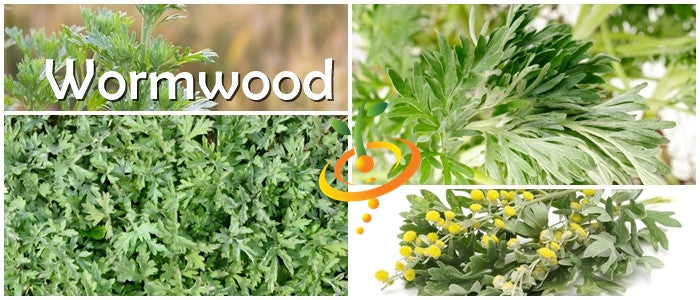













 Plant this mix in an area of your garden that gets partial shade. Includes a mix of 15 different shade tolerant (less than 6 hours of sunlight per day) flower varieties.
Plant this mix in an area of your garden that gets partial shade. Includes a mix of 15 different shade tolerant (less than 6 hours of sunlight per day) flower varieties. 


















 Includes a mix of 5 popular lupine flower varieties and colors. Scatter this mix of seeds in your garden and enjoy a beautiful assortment of lupine flowers.
Includes a mix of 5 popular lupine flower varieties and colors. Scatter this mix of seeds in your garden and enjoy a beautiful assortment of lupine flowers.


































 Includes a mix of 18 popular fragrant flower varieties and colors. Scatter this mix of seeds in your garden and enjoy the most fragrant flower assortment you've ever smelt.
Includes a mix of 18 popular fragrant flower varieties and colors. Scatter this mix of seeds in your garden and enjoy the most fragrant flower assortment you've ever smelt.



















 Includes a mix of 9 of the most vibrant and beautiful pink flower varieties. Scatter this mix in your garden and enjoy a beautiful assortment of pink flowers
Includes a mix of 9 of the most vibrant and beautiful pink flower varieties. Scatter this mix in your garden and enjoy a beautiful assortment of pink flowers


















 Includes a mixture of 6 popular coneflower varieties. Scatter this mix in your garden and enjoy a beautiful assortment of coneflowers!
Includes a mixture of 6 popular coneflower varieties. Scatter this mix in your garden and enjoy a beautiful assortment of coneflowers!



















 Plant this mix to attract beneficial insects such as ladybugs, lacewings, ground beetles and other insects that feed on pests.
Plant this mix to attract beneficial insects such as ladybugs, lacewings, ground beetles and other insects that feed on pests. 












 Includes a mix of 25 popular annual flower varieties that will produce a beautiful assortment of flowers suitable for cutting. The mix includes many of the flowers found in floral stores. This annual flower mix will blossom all-year-long creating a bountiful source of flowers.
Includes a mix of 25 popular annual flower varieties that will produce a beautiful assortment of flowers suitable for cutting. The mix includes many of the flowers found in floral stores. This annual flower mix will blossom all-year-long creating a bountiful source of flowers. 



























 Includes a mix of 21 popular annual flower varieties and colors. Scatter this mix of seeds in your garden and enjoy a beautiful assortment of flowers all year.
Includes a mix of 21 popular annual flower varieties and colors. Scatter this mix of seeds in your garden and enjoy a beautiful assortment of flowers all year.
































































































































